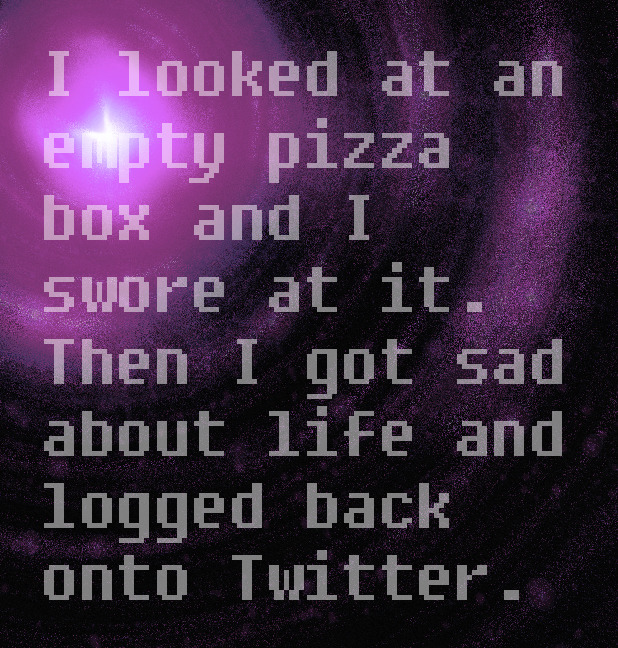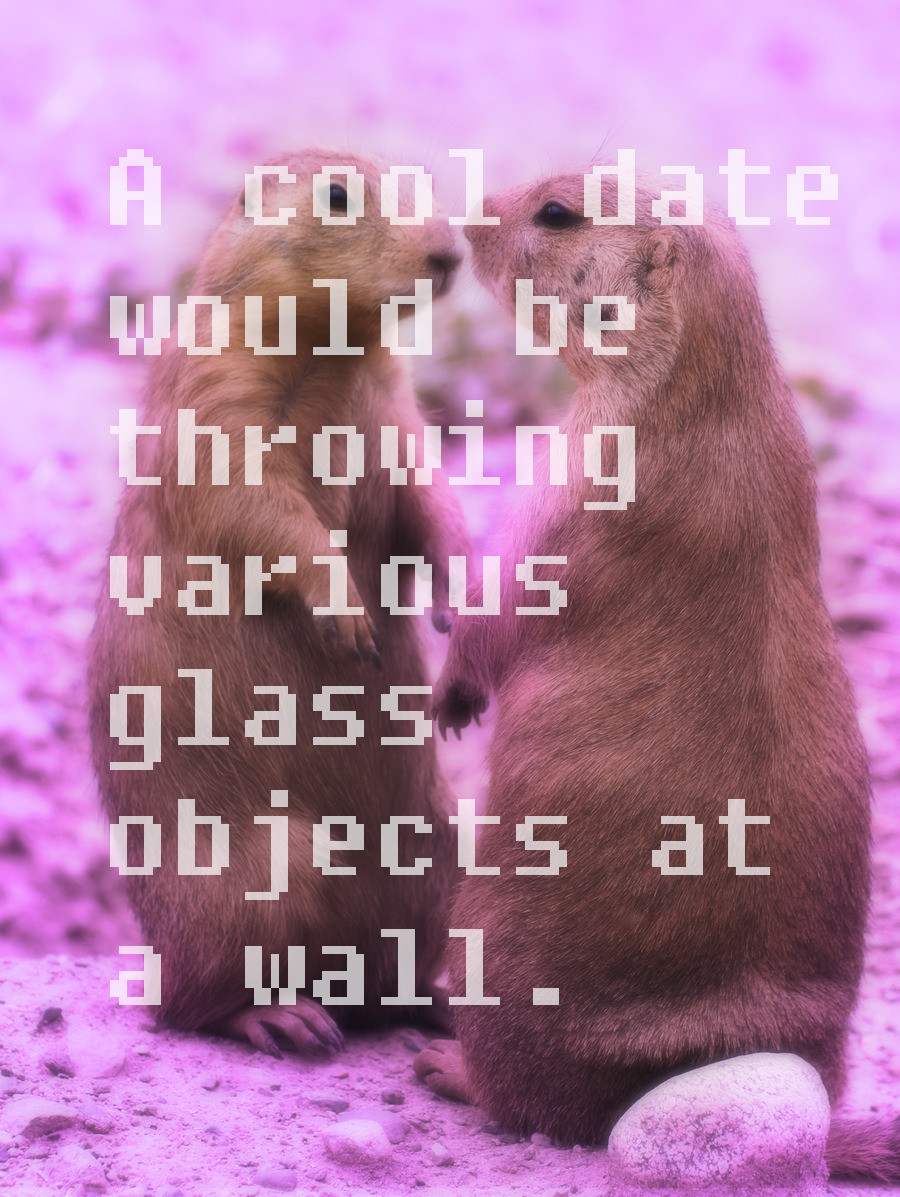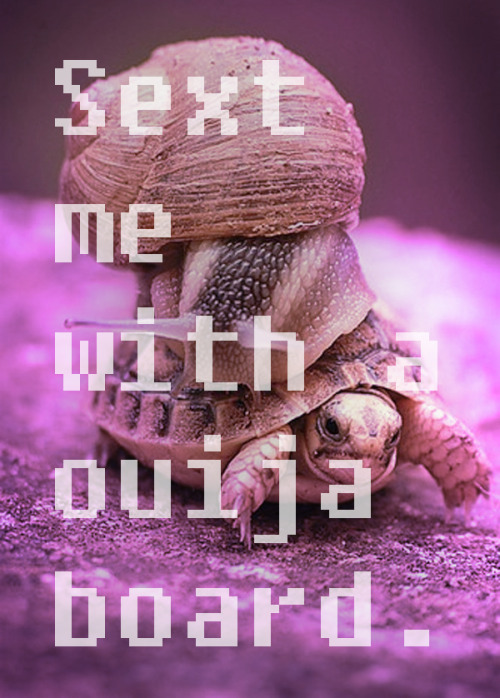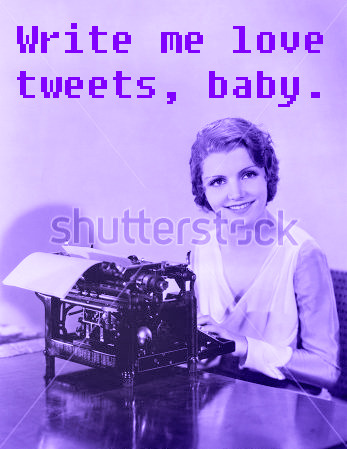America is a left brained society. It focuses on routine and structure and analytical/logical thought processes. It involves order and consistency and is most efficient for achieving preset goals. As a result, our education system suffers this disease. We draw at a perpetual sixth grade level because we were no longer encouraged to be expressive once we ‘matured.’ Reading level and math skills take priority because they’re what’s important IRL. That’s kinda stupid. Just like all those stupid kids that write poetry and draw pictures and do theater and make movies. Those kids aren’t smart because they can’t spell hippopottamos (hippopotamus) right or understand derivatives. They get scores in the 20s on the ACT because they can’t fill in the right ovals. Gosh.
I think Alt-Lit is sort of a backlash at left-brained upbringing. Poetry, at its core, doesn’t ‘make sense’ to left-brainers because it isn’t required to have form or structure and may not follow grammatical norms. Like abstract paintings, poetry can be a mystery to its readers. Poetry is flexible and adaptable to the visions of the artist, which is the true nature of art, and since so much of the world has fallen into the realm of the internet, a new breed of poetry arises. It’s loosely called Alt-Lit, with a lot of emphasis being placed on internet interactions. A reputable–if you will–blog about Alt-Lit, Internet Poetry, describes this thing as…
posts “screenshots of poetry being distributed with guerilla tactics on the internetâ€: poetry as Wikipedia vandalism, tweets, blog comments, etc (read the original doctrine).
Internet Poetry now publishes with a broader idea of what “internet poetry†can be, and is open to the many forms poetry can take online and community it can build.
Among this new genre of poetry, a specific artist has inspired me in a very peculiar fashion to document my life, even at its most mundane. Because I’m Purple is a collection of works that spans random ideas, longings, common daily occurrences, and anything else the creator finds particularly worthy. The inclusion of texts, emails, instant messages, and various other basic but somehow deeper thoughts, are reflected through the art. What captures one’s life in 1st world society more closely than this?

While we munch away at mass-produced synthetic substances we call food, we synthetically interact with our friends and the world via the Internet. Today is a time of disassociation and plastic interaction. Our lives become separated by this invisible digital wall that we can throw our emotions, unguarded, into and cause all sort of repercussions without ever seeing them.
 Texting conversations can kill relationships as the blunt unspoken words instantly traded back-and-forth can escalate emotions in false directions of intentions. Love can exist via a phone and this is strangely alienating. Because I’m Purple does a spectacular job of revealing this. By mockingly prodding at the false romanticism created via instant-messaging, a sense of disbanded heartache gets conveyed to the readers of the poem. Image-macros of prairie dogs take on the background for a perverse thought or desire, making that thought both a byproduct and machination of the interaction we have with the Internet. It is almost a strange love-affair where we are mental addicts to an illustrious drug. One piece that is particularly interesting pokes at this strange love-affair by inserting a new medium of transaction.
Texting conversations can kill relationships as the blunt unspoken words instantly traded back-and-forth can escalate emotions in false directions of intentions. Love can exist via a phone and this is strangely alienating. Because I’m Purple does a spectacular job of revealing this. By mockingly prodding at the false romanticism created via instant-messaging, a sense of disbanded heartache gets conveyed to the readers of the poem. Image-macros of prairie dogs take on the background for a perverse thought or desire, making that thought both a byproduct and machination of the interaction we have with the Internet. It is almost a strange love-affair where we are mental addicts to an illustrious drug. One piece that is particularly interesting pokes at this strange love-affair by inserting a new medium of transaction.

Like the purple hues taken on by most of these image poems, the melancholy state of these pieces reflect not only a longing for more classic and human connection, but a mocking tone of hopelessness toward society. Rather than become intimate in physicality, they poke at a state of lost romance/aesthetic appeal. Unlike most Alt-Lit, however, Because I’m Purple does a surprisingly good job of making Internet graffiti and uncoordinated image-mash-ups beautiful. They fully embrace the right brain and document our current state as a human race. Trying to understand Alt-Lit and making sense out of its purposeful confusion is against its very nature. It is something that rubs society against the natural grain, sometimes purposefully unappealing. To examine it as ‘art’ is almost ridiculous. As any Alt-Lit fan/creator would say after an attempt of examining Alt-Lit…LOL. Rather than embrace society and try to right its wrongs, Alt-Lit decides to laugh at the burning world.

Alt-Lit is probably the most reputable documentation of modern times.
All images are shared from BecauseImPurple.Tumblr.com


 Texting conversations can kill relationships as the blunt unspoken words instantly traded back-and-forth can escalate emotions in false directions of intentions. Love can exist via a phone and this is strangely alienating. Because I’m Purple does a spectacular job of revealing this. By mockingly prodding at the false romanticism created via instant-messaging, a sense of disbanded heartache gets conveyed to the readers of the poem. Image-macros of prairie dogs take on the background for a perverse thought or desire, making that thought both a byproduct and machination of the interaction we have with the Internet. It is almost a strange love-affair where we are mental addicts to an illustrious drug. One piece that is particularly interesting pokes at this strange love-affair by inserting a new medium of transaction.
Texting conversations can kill relationships as the blunt unspoken words instantly traded back-and-forth can escalate emotions in false directions of intentions. Love can exist via a phone and this is strangely alienating. Because I’m Purple does a spectacular job of revealing this. By mockingly prodding at the false romanticism created via instant-messaging, a sense of disbanded heartache gets conveyed to the readers of the poem. Image-macros of prairie dogs take on the background for a perverse thought or desire, making that thought both a byproduct and machination of the interaction we have with the Internet. It is almost a strange love-affair where we are mental addicts to an illustrious drug. One piece that is particularly interesting pokes at this strange love-affair by inserting a new medium of transaction.

 You have created a new art form.
You have created a new art form. Nigel Poor
Nigel Poor Whether it be torching a copy of Fahrenheit 451 or separating black-and-white pages from The Adventures of Huckleberry Finn, the process of recreating these books more powerfully captivates the original spirit of the work itself. Especially now in the information age, when physical books often go extinct for the more suitable online medium, the power of paper in a work is an attempt at reviving the spirit of physicality available in books. There is something about bookstores and libraries that is intrinsically pleasing in real life, as opposed to the digital medium. One can argue the aesthetic value of actually seeing the sheer volume of information available in a bound piece. When this body, this container for the substance within, is minimized to the visually unsubstantial work on a computer screen or digital reader, something is lost within the book. It is like a person being transformed into digital material, like on Facebook or Twitter or any other form of social media. The ideas—the spirit—of the person remains, as they can write their mind and demonstrate the thoughts swimming within via pictures and art and music and all these great things, but the container, the body, is not transferred. Therefore, it is not the same. We crave to meet people in person; which is why we still have interviews and keep restaurants and social gathering places in business. The body, our container, affects the content. Be it from body language or outward expressions of our personality—hairstyle, skin color, piercings, etc—our physical form has an effect on the thoughts within. This is what the banned book project plays upon.
Whether it be torching a copy of Fahrenheit 451 or separating black-and-white pages from The Adventures of Huckleberry Finn, the process of recreating these books more powerfully captivates the original spirit of the work itself. Especially now in the information age, when physical books often go extinct for the more suitable online medium, the power of paper in a work is an attempt at reviving the spirit of physicality available in books. There is something about bookstores and libraries that is intrinsically pleasing in real life, as opposed to the digital medium. One can argue the aesthetic value of actually seeing the sheer volume of information available in a bound piece. When this body, this container for the substance within, is minimized to the visually unsubstantial work on a computer screen or digital reader, something is lost within the book. It is like a person being transformed into digital material, like on Facebook or Twitter or any other form of social media. The ideas—the spirit—of the person remains, as they can write their mind and demonstrate the thoughts swimming within via pictures and art and music and all these great things, but the container, the body, is not transferred. Therefore, it is not the same. We crave to meet people in person; which is why we still have interviews and keep restaurants and social gathering places in business. The body, our container, affects the content. Be it from body language or outward expressions of our personality—hairstyle, skin color, piercings, etc—our physical form has an effect on the thoughts within. This is what the banned book project plays upon.
 They embody the power of the written word in a new shape, and provide a growing deviant of inspiration unachievable by simply the text itself. It gives new life to these formerly shackled pieces. It frees the book.
They embody the power of the written word in a new shape, and provide a growing deviant of inspiration unachievable by simply the text itself. It gives new life to these formerly shackled pieces. It frees the book.
